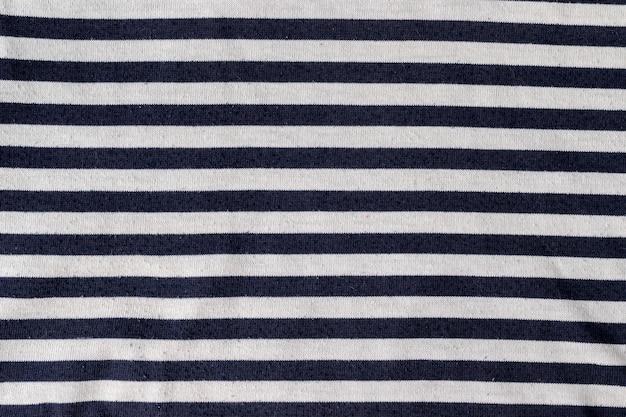Are you tired of finding annoying fabric pills on your favorite clothes or furniture? We feel you! Fabric pilling is a common problem that can make even the best fabrics appear worn out and shabby. But worry not, because in this comprehensive guide, we are going to delve deep into the world of fabric pills and answer all your burning questions.
From the notorious cotton flannel and polyester blends to luxurious Egyptian cotton and merino wool, we will explore the pilling tendencies of various fabrics. We’ll also discuss whether linen, microfiber, acrylic, polyester, cotton-polyester blends, and viscose are prone to pilling issues. Additionally, we’ll provide tips on how to fix pilling and whether using a razor or fabric softener has any impact.
So, if you’re dying to know which fabric pills the most, which fabrics are least likely to pill, or if cotton is a foolproof choice, keep reading! We’ve got you covered to make your fabric choices easier and prevent those pesky pills from ruining your favorite garments. Let’s dive right in!
What Fabric Pills The Most
Understanding Fabric Pilling
Fabric pilling is that pesky phenomenon where your favorite cozy sweater transforms into a lumpy mess, resembling something only a pack of moths would find appealing. But why does it happen? Well, let’s delve into the world of fabric pilling and uncover the secrets behind this textile curse.
The Pillars of Pilling
When it comes to fabric pilling, we have the main culprits: fabric type, weave, and fiber length. Synthetic fabrics like polyester and nylon are notorious for their pilling tendencies, while natural fibers like cotton and wool generally put up a stronger fight against those fluffy nuisances. But there’s more to the story than just the fabric type.
Weave it or Not
The weave of a fabric plays a significant role in whether it pills or remains smooth. Looser weaves, such as a loose knit sweater, provide ample opportunity for friction to occur, resulting in pills galore. Meanwhile, a tighter weave, like a sturdy canvas, can fend off those pesky little fabric balls for a longer time. So, the weave matters!
Fiber Length Matters
Believe it or not, the length of the fibers in a fabric can determine its susceptibility to pilling. Longer fibers, like those found in Egyptian cotton, tend to be more resistant to pilling as they intertwine tightly, leaving little room for pilling to take place. On the other hand, shorter fibers, commonly found in lower quality cotton blends, are prone to breaking and forming their oh-so-irritating pills.
The Enemy Within: Determining Factors
Apart from the fabric itself, certain external factors can exacerbate pilling. One common enemy is friction – think of rubbing against rough surfaces or vigorous activities like rock climbing and couch acrobatics (no judgment here). Another assailant is improper laundry care. Overwashing and tumbling with abrasive items can set the stage for pilling to make its grand entrance.
Don’t Lose Hope – Prevention is Possible
While we can’t entirely eliminate fabric pilling, there are ways to reduce its occurrence. Opting for higher-quality fabrics like silk, bamboo, or cashmere can help prolong the smooth life of your garments. Additionally, handwashing delicate items or turning them inside out before tossing them in the washing machine can work wonders. And remember, air-drying is your best friend, as heat from dryers can weaken fabrics, making them more susceptible to pilling.
In Summary
Fabric pilling may seem like an unavoidable annoyance, but armed with the knowledge of fabric types, weaves, and fiber lengths, you can make informed purchasing decisions. Choose fabrics that are less prone to pilling, take good care of your items, and ward off friction like a pro. And when those stubborn pills do make an appearance, embrace them as battle scars, a symbol of the wear and tear that comes with a life well-lived in your favorite clothes.
FAQ: What Fabric Pills The Most
Fluffy Fabrics and Pesky Pills: Your Burning Questions Answered
Are you tired of finding those annoying fuzz balls on your favorite clothes and beddings? Have you ever wondered why some fabrics seem to be pilling more than others? Well, fret no more! In this FAQ-style blog post, we will dive deep into the world of fabric pilling and provide answers to all your burning questions. So, put on your investigative hat and let’s get to the bottom of this plushy problem!
Does Cotton Flannel Pill
Ah, cotton flannel, the cozy companion on those chilly nights. But does it come with a side of pills? Fortunately, cotton flannel is known to be relatively resistant to pilling. However, this doesn’t mean it’s entirely pill-proof. So, while your flannel shirts might hold up well, keep an eye out for any potential pills that may sneak their way onto your flannel sheets or blankets.
What Type of Cotton Does Not Pill
Not all cotton is created equal when it comes to pilling. You’ll be pleased to know that long-staple cotton, such as Egyptian cotton, is less prone to pilling than its short-staple counterparts. So, if you’re looking for cotton fabrics that stand up to the pill test, keep an eye out for those longer strands.
Does Linen Have Pilling Problems
Linen, oh linen, you beautiful, breezy fabric. While linen is loved for its breathability and natural charm, it’s not entirely immune to pilling. However, the good news is that linen generally tends to pill less than other fabrics, thanks to its strong fibers. So, embrace your linen garments and let them dazzle with minimal pill interference.
Can You Use a Razor to Remove Pilling
Ah, the elusive battle against the pill balls. While some folks swear by using razors to remove those pesky pills, we advise caution. Razor blades can be pretty sharp, and you wouldn’t want to accidentally turn your favorite sweater into a Swiss cheese masterpiece. Instead, opt for gentler methods like pill shavers or fabric combs that are designed specifically for this purpose.
Can Microfiber Sheets Pill
Ah, microfiber sheets, the soft embrace of modern bedding. As cozy as they may be, microfiber sheets do have the tendency to pill. The tiny synthetic fibers can rub against each other, causing pills to form. To minimize the risk of pilling, opt for higher-quality microfiber sheets or consider alternative materials like cotton or linen.
Are Acrylic Pills Easy
Acrylic, the fiber that brings us fuzzy blankets and snuggly sweaters. Unfortunately, acrylic fibers are prone to pilling. The nature of the synthetic material makes it more susceptible to friction, resulting in those unsightly pills. If you have acrylic garments or accessories, be prepared to show them some extra love and attention to keep the pills at bay.
Does Fabric Softener Cause Pilling
Ah, fabric softener, the magical elixir that keeps our clothes soft and smelling divine. Does it have a dark side though? Well, fabric softener itself doesn’t directly cause pilling, but it can make the fibers more prone to friction, which can lead to pilling. So, if you’re battling the pill monster, consider skipping the fabric softener or using it sparingly.
Does Polyester Pill on Couch
Polyester, that versatile fabric that seems to be everywhere, even on our couches. While polyester is known for its durability, it can still pill over time. The synthetic fibers can rub against each other during regular use, causing those pesky pills to form. To prevent pilling on your polyester couch, choose high-quality upholstery and consider using protective covers.
Does Polyester Have Pilling Problems
Polyester fabrics, the chameleons of the textile world. While polyester is generally less prone to pilling than some natural fibers, it’s not entirely exempt from this fluffy nuisance. Higher-quality polyester and blends can offer improved resistance to pilling, so opt for those if you prefer a more pill-resistant option.
What Fabric is Least Likely to Pill
Ah, the golden question – the pursuit of the ultimate pill-resistant fabric. While no fabric is entirely immune to pilling, some tend to pill less than others. Fabrics like silk, cashmere, and certain high-quality synthetic blends are known for their minimal pilling tendencies. So, if you’re on a quest to minimize pills, these fabrics might be your best allies.
Does Egyptian Cotton Have Pills
Egyptian cotton, the epitome of luxury in the textile realm. As we mentioned earlier, the longer staple length of Egyptian cotton makes it less prone to pilling compared to short-staple cotton. So, if you’re indulging in the soft embrace of Egyptian cotton sheets or garments, you can rest easy knowing that pills won’t be your constant companions.
How Do You Fix Pilling on Fabric
Ah, the battle scars of pilling. While prevention is key, sometimes those pesky pills still manage to make an appearance. Luckily, there are ways to combat them. You can use fabric shavers, combs, or even gently sandpaper the pills away. Just be sure to handle your delicate garments with care, as excessive force or abrasive methods can lead to damage.
Does Recycled Polyester Pill
Embracing sustainability with recycled polyester? While recycled polyester is a step in the right direction for our environment, it can still pill. The fiber composition remains similar to conventional polyester, so be prepared to give your recycled polyester garments some extra TLC to keep those pill balls at bay.
Do Jersey Sheets Do Pills
Ah, jersey sheets – the stretchy, comfortable bedding choice. Does it come with a side of pills? Well, jersey sheets can pill to some extent, but generally not as much as other fabrics. The knit construction of jersey fabric can help minimize the appearance of pills. So, enjoy the cozy comfort of your jersey sheets without dwelling too much on potential pills.
Does Cotton Polyester Blend Pill
Ah, the marriage of cotton and polyester, creating a fabric union of strength and comfort. While cotton polyester blends can pill, the extent of pilling can vary. The presence of polyester can add some pill resistance to the fabric, but depending on the specific blend and quality, pills may still appear. Choose higher-quality blends for improved pill resistance.
Does Merino Wool Pill
Merino wool, the soft and luxurious wool renowned for its warmth. While merino wool is generally less prone to pilling compared to other wool varieties, it can still pill to some extent. The fine fibers of merino wool can rub against each other during use, resulting in those tiny pills. Regular care and gentle handling can help preserve the appearance of your merino wool garments.
Does Viscose Pill Easily
Viscose, the breath of nature in fabric form. Unfortunately, this semi-synthetic material has a higher tendency to pill compared to some other fabrics. The structure and texture of viscose fibers make them more prone to friction-induced pilling. So, if you’re rocking viscose garments, be prepared to give them some extra attention to prevent and remove pills.
Is Cotton 100% Pill-Free
Ah, the fabric we know and love – cotton. Regrettably, even our beloved cotton is not entirely pill-free. While cotton is generally known for its pill resistance, factors like the quality of the fabric, thread count, and manufacturing process can all influence its propensity to pill. So, enjoy your cotton garments, but remain vigilant for the occasional pill intruder.
Now that we have unraveled the mysterious world of fabric pilling, we hope you feel armed with knowledge to combat those fuzzy foes. Remember, every fabric is unique, and while some may be more pill-resistant than others, proper care and maintenance are crucial in keeping your clothes and bedding in top shape. So, go forth, clad in your comfiest fabrics, and conquer the battle against pills with confidence!
Disclaimer: The information provided in this blog post is for informational purposes only and should not be considered as professional advice. Please consult with experts or conduct your own research for specific fabric and garment care.

